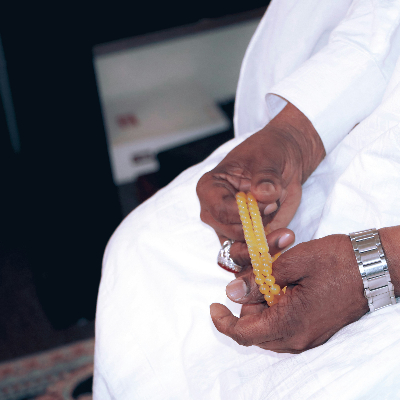Menu
-
-
F.A.Q
- How to identify genuine agarwood chip, natural or cultivated
- How to identify oil injection / absorption fake agarwood beads
- How to know if there are more than one oil in your oil
- How to make your wood bracelet or mala darker
- How to tell if an Agarwood bead sinks WITHOUT sinking it under water?
- How does back flow incense work and how do you burn it?
- Where to start if you don't know what agarwood is ?
- Why are you losing money if you buy seeds and plants?
- Which agarwood incense should I choose?
- Frequently Asked Questions
- Agarwood Related Articles
- Shipping
-
SHOP - Agarwood
-
SHOP - Other Fragrant Wood
-
SHOP - Incense Holder and Burner
-
- FREE Oud Oil guide
- Testimonials
- "Why did you buy this?"
- Contact us
- About Us
- +61430284329
- Login
-
English


Agarwood - possibly the most expensive non-timber wood on earth
It is wood, but it is also non-timber. How?
People have been using wood in construction, carpentry and furniture making for thousands of years. Most woods are timbers.
But, there is a wood species which is too soft to make anything out of it. People even use it as firewood or fuel, or even campfires. It was classified as non-timber wood because apart from burning, people do not know what else they can use it.
Personally, I knew a friend who asked me to make a walking stick to his grandfather. It took 5 hours for our craftsman to make it. We tested it on a big man who was 110 kg before giving it to his granddad. Unfortunately, it is too soft to support someone who is over 100kg; the stick broke in half. It was a blessing in disguise also because it could have hurt someone if we had not tested it.
A short story of Agarwood - a scent of stress


People have different names for Agarwood, such as aloeswood, or eaglewood. In different countries and cultures, its name ranges from agar, oud, gaharu, calembac, etc. In Chinese, people call its chénxiāng (沉香), "Chim Hyuang" in Korean, jinkō (沈香) in Japanese and Vietnamese as "Trầm Hương". Those names all mean "sinking incense".
So when the Aquilaria tree is stressed, injured or wounded, it creates Agarwood to protect, and to heal itself.
When there is no stress, there is no agarwood; hence there is no scent.
What do "sinking" and "incense" mean?
The infected heartwood part will create resin and solidify through aging. The more resin it has, the heavier it becomes and the denser it gets. When its density is higher than water, it sinks.
So when you heard the term "sinking" grade. It means the agarwood item is old and resinous. In short, good quality.
"incense" means fragrance or aroma extracted from herbs and trees. The practice of burning incenses exists from centuries ago.
So. the name "sinking incense" means pleasant quality fragrance.

In many societies and cultures, people appreciate Agarwood for a variety of uses from medicinal to sacred religious ceremonies with positive effects on human health. Even though scientists are still researching the Agarwood's benefits, the ancients used it in treating kidneys and replenishing qi centuries ago. Egyptians used incenses in their death ritual ceremony more than 3,000 years ago. With the aid of modern technology nowadays, Agarwood has been proved to contain many health benefit properties which added more values to this herbal medicine. It is not hard to find different products in different forms made of Agarwood on the market recently such as oil, incense, powder, wood chips and tea. The oil is used in the production of medicine, perfume and cosmetics. A solid piece of Agarwood can be displayed as a natural art, or be carved by talented artists and their value raised to hundreds of thousand dollars. Smaller wood chips are heated to release the divine aroma, or ground into powder as used in the incense industry. The Agarwood essential oil is in demand in Saudi Arabia and the Middle East countries; it is one of the main ingredients in making luxurious and high-class perfume. Another large market is Japan; they are renown for producing high-end incenses.
Those products are mainly sourced from Southeast Asia, the cradle of the Aquilaria tree. They carry slightly different tastes and smells due to the differences in Agarwood species existing in each country. The two main species found in Vietnam are Aquilaria Banaensae (only endemic to Vietnam) and Aquilaria crassna. Vietnamese Agarwood is long renowned for its high quality, versatile uses and uniquely sweet, peppery and bitter taste. The famous place for Agarwood in Vietnam is Khanh Hoa province, also known as "the Agarwood land". Before cultivating Agarwood, people mainly harvested them from the wild. It is a challenging task because only one our of 100 Aquilaria tree contains Agarwood. The price of wild Agarwood is exceptionally high because it is hard to get. The hunters encounter endless challenges during their trips, such as food and accommodation shortage, dangerous road et al.
Despite the dangers, due to high demand for wild Agarwood, there will always be someone in the forest hunting for this tree. This action has been depleting the wild Aquilaria trees.
To preserve this precious resource from overharvesting in the wild, with modern technology, farmers start growing Agarwood on their farm, known as agarwood plantation. You can find our one here.
The ingredient that was exclusively for the Royal family in the past
Due to its high cost, only the royal and noble circles were able to use it.
"The exclusive quality of agarwood was beyond question among the Chinese nobility, since the aristocrats had learned about agarwood as a select tax and tribute item like gold; the product was thus associated with exclusivity and social prestige" (Jung, page 108, 2013)
The scent
"Its fragrance presents one of the most complex olfactory accords known in perfumery today; it is mainly distinguished by a combination of "oriental- woody" and very soft fruity-floral notes. Especially the smoke arising during incensation of best quality consisting of a "sweet-balsamic" note and shades of vanilla and musk and ambergris" ((Jung, page 106, 2013).
Do you want to feel it? There is no need to press your nose to the screen because...
You could get the quality oud here delivered to your home. Thanks to technology, we are able to go directly from our plantation to you.
Do you want to know what it is like to smell oud? Once you tried, you would know why the royal family like it. And no, you are not able to experience it if you try an Oud perfume because there are many different ingredients in it.
Don't believe me?
Here is something you could try. Next time, when you buy some niche perfume, ask a sale consultant what oud smells like? Occasionally, you would be lucky as someone may be able to tell you that. But most of the time, it will be unlikely. Given you the best chance that you met one of the best sales consultants, would it be better that you experience it yourself, in your hand which you can touch and feel rather than through someone words?
If you agree and love to know more about oud oil, you can start your journey here
2 Responses
Clemente lapinig
May 04, 2020
Thanks you so much for giving me more knowledge about aquilaria tree
Leave a comment
Comments will be approved before showing up.
Also in News

What is Tasbih? The Deep Meaning of Subhan Allah and the Role of Prayer Beads
November 09, 2025 4 min read


Clemente lapinig
May 04, 2020
Thanks you so much for giving me more knowledge about aquilaria tree